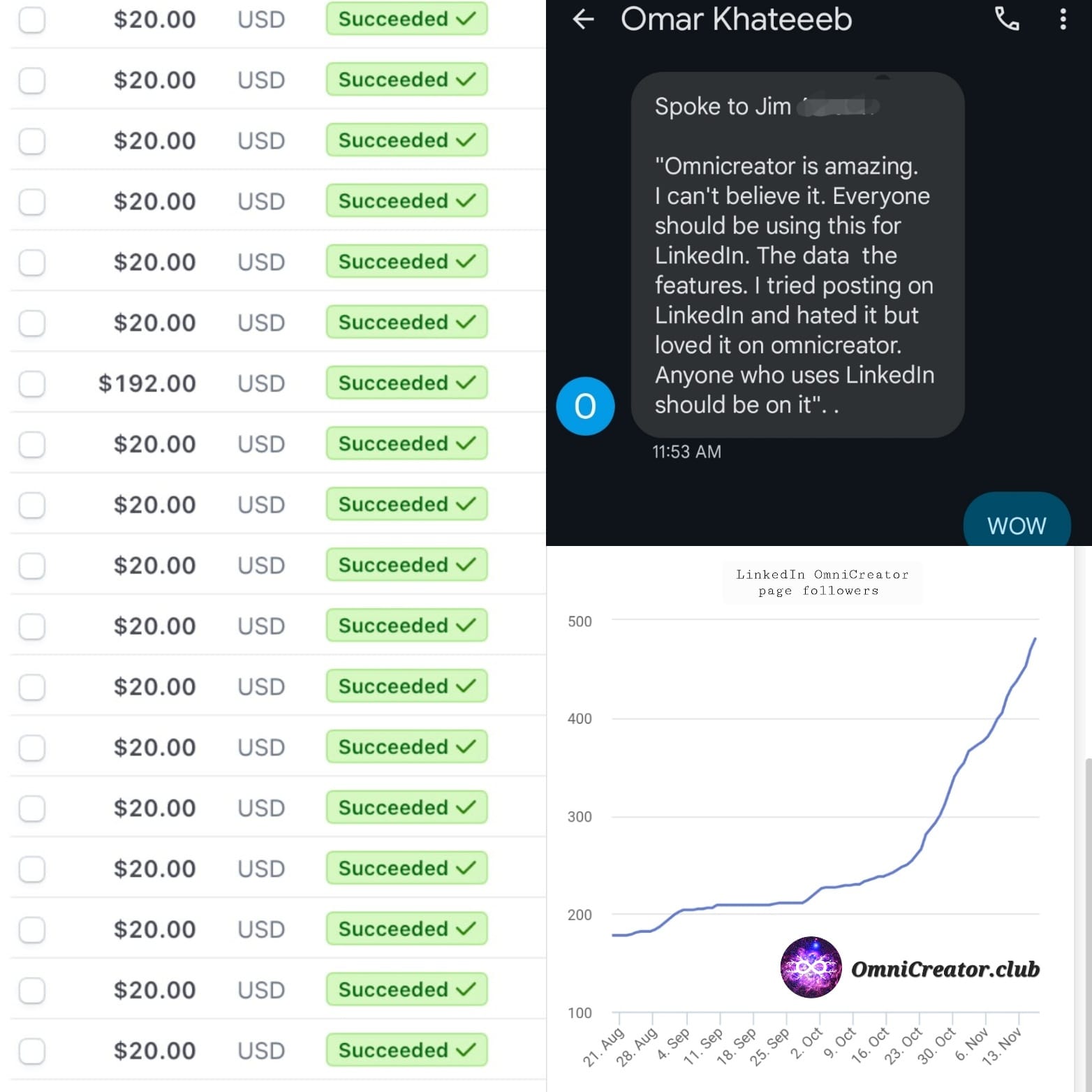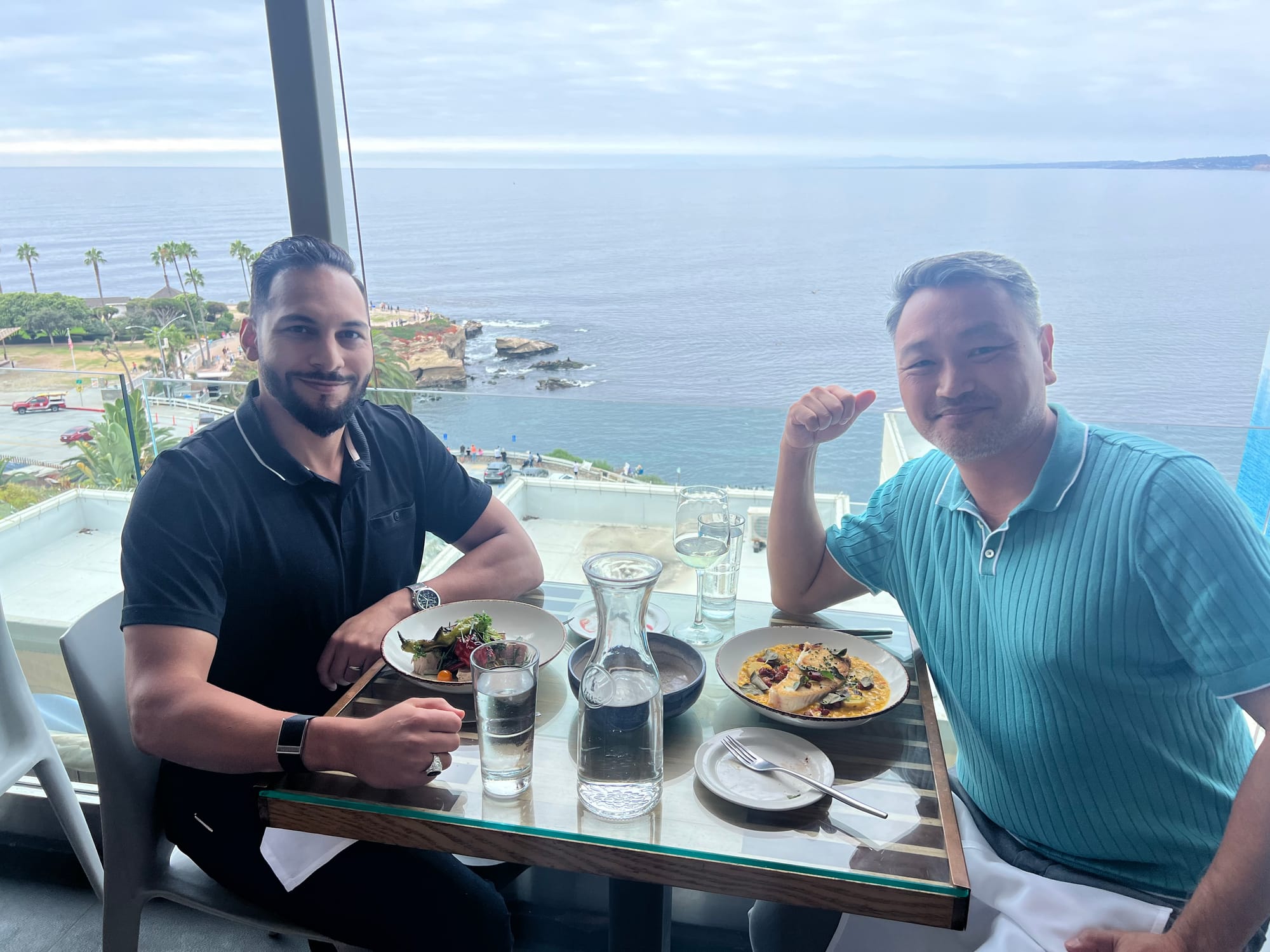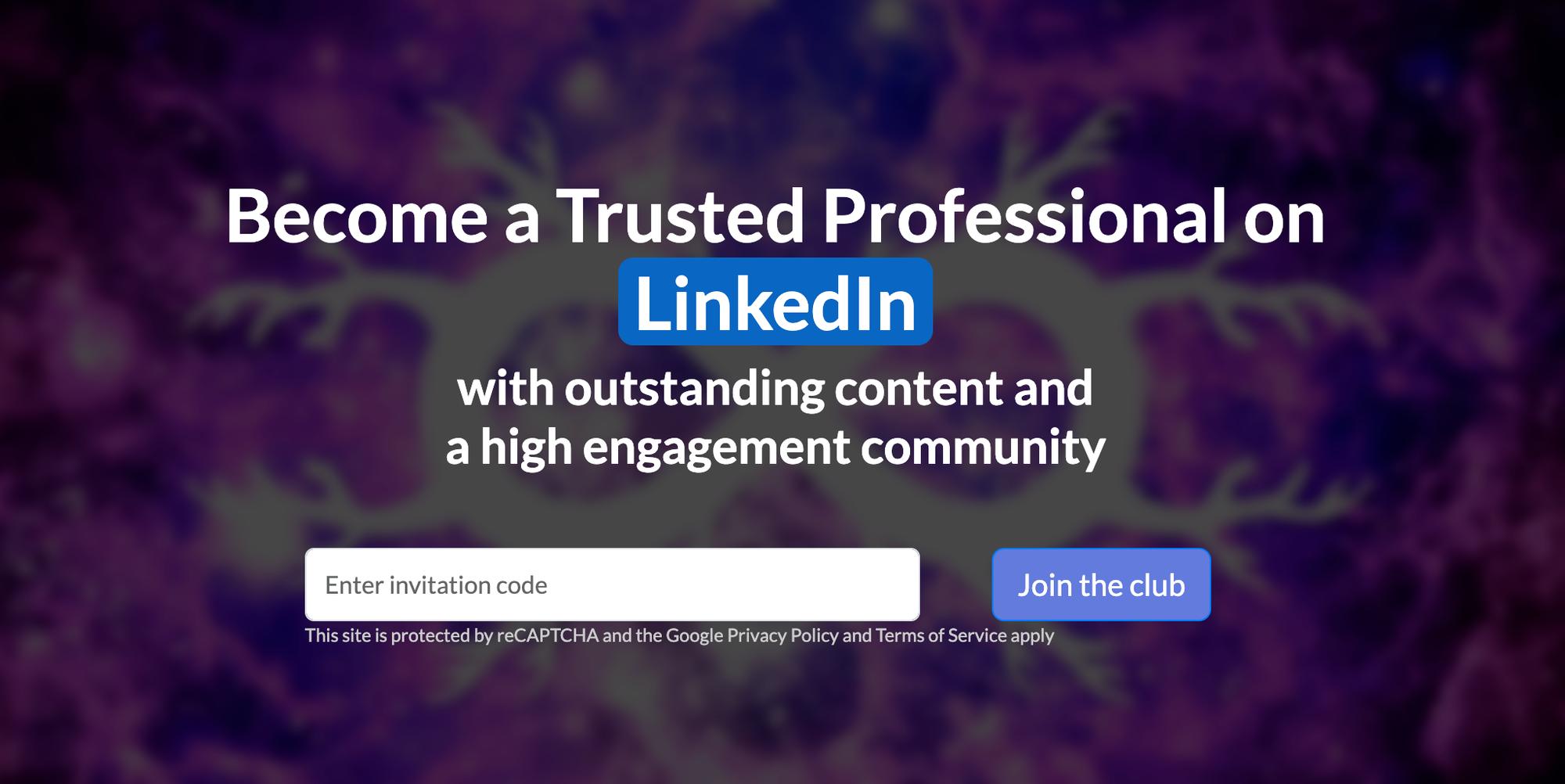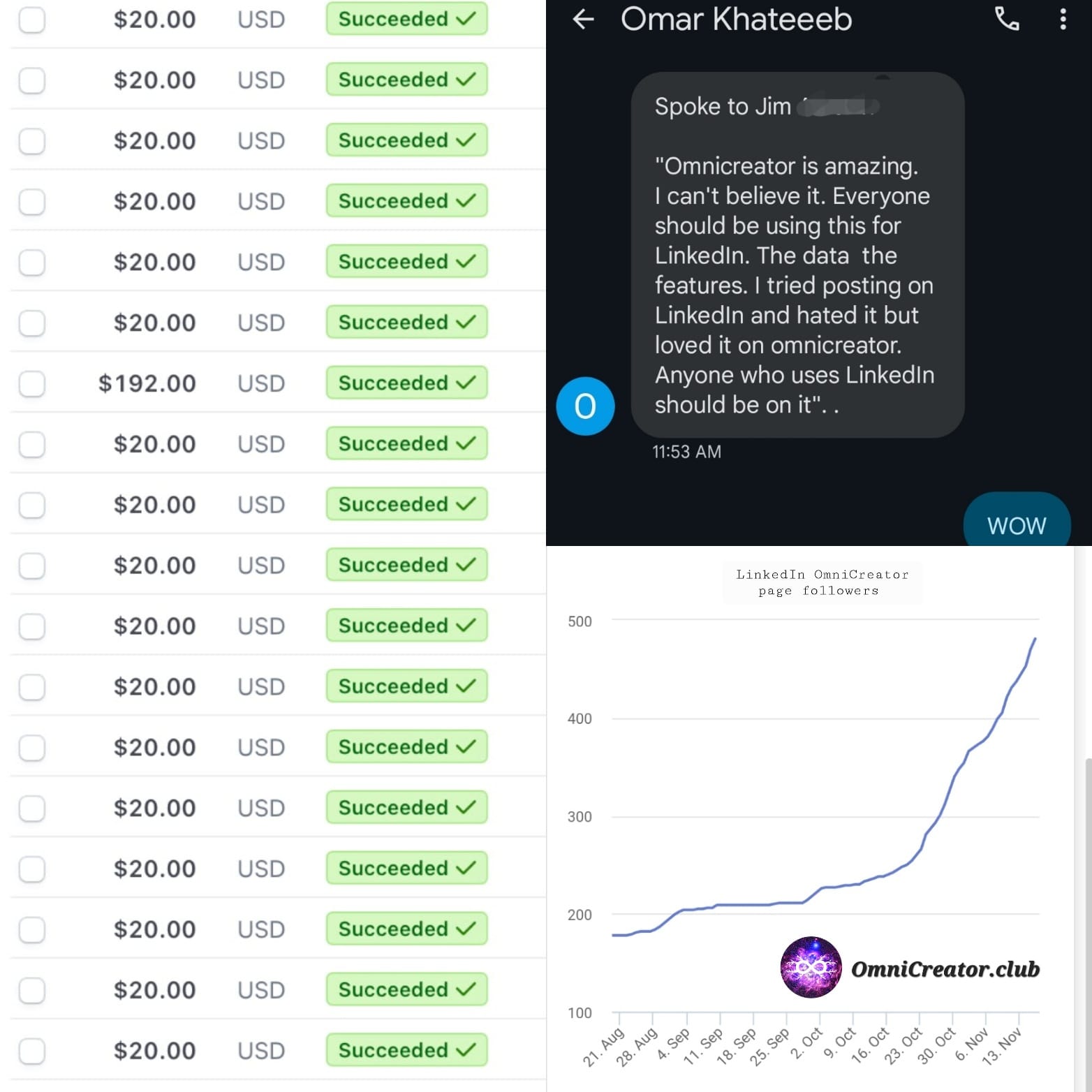How to bootstrap a SaaS product and generate revenue
In this blog, I'll share the steps I took to build a SaaS product for myself, share it with friends, and then release it successfully as a paid product within a few months. We are at the beginning of a great era of scaling lifestyle businesses!

Forming a new company with a great friend
The best thing that happened to me at work this year was creating a new product and forming a company with my friend Omar.

I'd like to summarize how the company, which wasn't even an idea at the beginning of the year, came to being in the blink of an eye.
Omar and I are both solopreneurs. A few years ago, I inspired Omar to start his own business. Then, a year ago, I, an engineer, and Omar, a marketing specialist, agreed to work together on a project. It was an experiment to see what happens when two solopreneurs cooperate in different fields of expertise. "I build, and he sells!" So we agreed.
The name of the company is Two Sea Lions Inc. I came up with it on the spur of the moment. The photo above was taken when I visited Omar in San Diego at the end of the summer. While eating at Georges at the Cove restaurant overlooking La Jolla Beach, we saw large sea lions gracefully lounging on rocks, unconcerned about the divers and tourists nearby. The sight of this unassuming creature reminded me of two solopreneurs who are doing their own thing. That is the origin of Two Sea Lions.
Riding the trend of personal branding and social selling
Before the incorporation of Two Sea Lions, Omar and I created OmniCreator.club, a membership service that provides the tools and community to become a trusted professional on LinkedIn.

LinkedIn is the best social network for solopreneurs to develop customers and generate sales. Centered on LinkedIn, social selling is becoming an essential keyword for solopreneurs and marketing and sales in large companies. The key to this is posting from personal accounts instead of corporates'. IT giant Cisco announced in 2022 that it had begun training 84,000 employees on how to use LinkedIn effectively. It is gradually becoming recognized that sending information from an employee's personal account is more likely to attract sympathy, reaching more people than sending information from a corporate page.
Omar has 34,000 followers in the medical device sales field. I have one-tenth of that number of followers in the engineering field. He and I post helpful information and personal stories to our followers daily. By having our profile pictures and names appear daily on the timelines of those we connect with and by talking about our areas of expertise, we achieve two things: The first is to stay in the minds of the existing customers. The other is to have potential customers associate our faces and names with our areas of expertise and keywords.
The timeline of LinkedIn users is busy with various posts. So, we need to create compelling content that stops their scrolling fingers. Individual LinkedIn posts reach only 10% of all followers. Therefore, you need to repeat the same message regularly. OmniCreator provides the tools to schedule daily content that will grab attention and be helpful to everyone.
Individuals post to LinkedIn for a variety of reasons. They can become well-known in their field of expertise to get a better job or career opportunity, sell educational content, or become an independent consultant. Some sales professionals also use LinkedIn to expand their network and help in their sales activities. Some lawyers, financial advisors, and doctors use it to enhance their personal brand. OmniCreator started as a content creation tool but has grown into a supportive community working hard for similar goals. There is a saying in online product development, "Come for the tool, stay for the network." We want to realize this in the form of a community.
Steps from the product creation to monetization
Having earned a PhD in the US, worked for a large company, built a product from scratch in a startup, and started my own company, I have a complete set of methods for shaping ideas for digital products. These methods are not golden rules; they are my way of doing things, but I would like to summarize the process.
I, an engineer, would take the following steps to launch a digital product:
- Create what you want
- Ask a friend to try it
- Recruit initial free users
- Start charging
- Retain the paid users
- Gain Word-of-mouth
1. Create what you want
Make what YOU want.
I don't want to waste my effort, so I start by making something I would use. The idea comes to me when no tool exists to make my work more efficient or when I am unsatisfied with the existing products. At this stage, it is enough if I can use it. With this approach, you will still be satisfied with having made something helpful and learning from it, even if the project stops here.
2. Ask a friend to try it
Talk to your friends, get feedback, and then improve. Repeat.
If you want people to use it, you must make it a web application and let them create an account to log in. Most of your friends would say they like it, but don't believe them. They say it's good, but they don't come back, and that's where the real story lies. That's why we measure who uses our services and when. Time to value is critical, so we also measure the time from sign-up to task completion and value realization.
Where are the people with the same problem as yours, and who will use the software? And even if you think you have designed your software to be intuitive, you will discover that people get confused with many parts of the software that cannot be used without explanation. It takes much more than Step 1 (creating for yourself) to make the software perfect for others.
3. Recruit initial free users
Get out of your comfort zone. Reach out to anyone with a problem. Ask for feedback and testimonials.
After squashing all the problems and bugs based on the feedback you received in Step 2, reach out to more people (I know it takes courage!) Remember, free does not mean no cost to the users. You are asking people's time to try out a product with no reputation.
At this stage, find someone other than a friend who might be an ideal customer and ask them to try it out. So you have to introduce yourself and briefly tell them what it can do for them. Continue measuring usage as you started in Step 2, and respond to any feedback as quickly as possible. Make an effort to interact and respond to users via e-mail, chat, etc., so that they do not lose interest and get a favorable impression of the service. Once you have gained a few fans, you should ask them to write testimonials.
4. Start charging
You've been using your product and talking to the users every day. You know when your tool becomes essential for you and a few other people. So, start charging already.
Calculate the cost of acquiring users and managing their accounts. You are not in business if you cannot cover those costs and make a profit. Is it possible to lower the cost? Or, can you increase the value of the service so that you can charge a higher fee? How much do other similar products cost? Is it possible to raise the price by narrowing down the target clientele and creating a sense of luxury? Considering these factors, decide on a billing structure and price, and try to recruit paying users.
At this point, do not use ads or run a flashy product launch. Manually recruit a few dozen users and continue dialogue and improvement as in Step 3. At the same time, learn what the ultimate desire of your target customers is beyond product solutions and reflect that in your copywriting. It will be difficult to attract more users if you don't sharpen your copy and present the joyful testimonials from the initial users. You will fail and waste money if you run ads before that is solidified. Strictly adhered to perfect product quality with a limited number of users before expanding marketing and sales activities.
5. Retain the paid users
For online tools, or SaaS (software-as-a-service), customers enter their credit card and start paying monthly after a free trial. The first few months are critical for the new customers. The service must be worth their time and money, or they churn. Communication is also crucial; You must continue to communicate the value of your service to the users through emails or in-app content tailored for each customer's maturity.
6. Gain Word of Mouth
The most effective sales channel is word of mouth. Customers must love you because of your highly perfected products and great support. Customers who love you know similar types of people. Ask them to talk about your product with their friends. Also, incentives should be created with referral-based fee reimbursement and affiliate programs.
Choosing the right segment is also important. Trying to deal with the entire market will not work at the beginning. Finding places where people of a certain country, industry, profession, age, or other commonalities gather and converse is more effective. Focus your efforts on them. If someone influential or a majority of people use it in a small group, it is easy to make others think, "I should jump on, too".
Scalable Lifestyle Business
By following the above steps carefully and without haste, our monthly sales have stabilized, although they are still small. The number of followers on the product's LinkedIn page has also increased, and we have received a lot of good feedback.

Omar and I, each earning income from our separate businesses, launched the OmniCreator project without hiring anyone and with limited time and a minimal budget.
We do not need to bring in outside funding in the future. What we want to pursue is a scalable lifestyle business.
The evolution of cloud computing over the past decade has been remarkable. One full-stack engineer is all that is needed to develop new services from experimental deployment to monetization. More businesses can be created without having to go through the process of raising funds from venture capitalists and angel investors, hiring people, and finally launching the business, as has been the case until now. By not bringing in outside funding, keeping costs low, and focusing on monetization potential from the outset, businesses can grow gradually at their own pace without overworking themselves.
At a minimum, the startup only needs someone to make, sell, and provide customer support. I can create, but I am not good at selling. Fortunately, I could team up with my good friend Omar, who became an independent business owner for his sales skills. Omar and I will be like sea lions on La Jolla Beach, slowly building a business next year that will scale beyond our time while putting our family and lifestyles first.
2023 was the year generative AI, like ChatGPT, began to accelerate the creative activities of ordinary people. AI programming and marketing while a single human acts as an executive. Such a future is already here. The groundwork for a successful, scalable lifestyle business has been laid. We believe that more and more people will succeed in scalable lifestyle businesses. It will be considered an alternative style to venture capital-backed startups.
Building a scalable lifestyle business is satisfying, and the potential is unlimited. Why don't you join the movement?